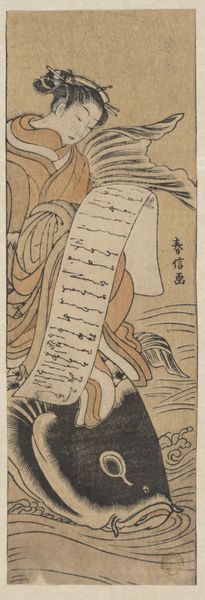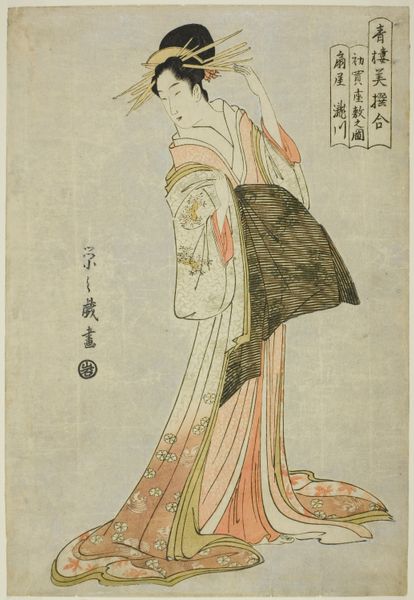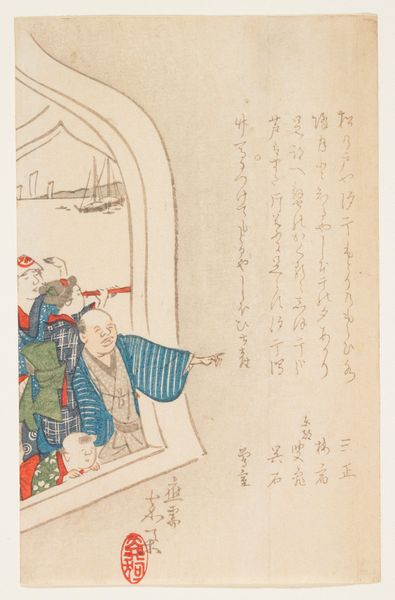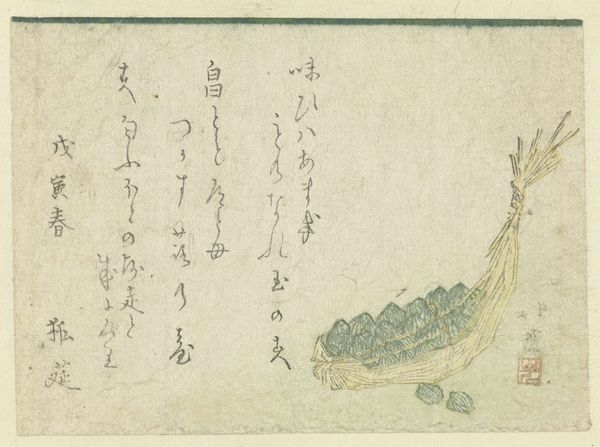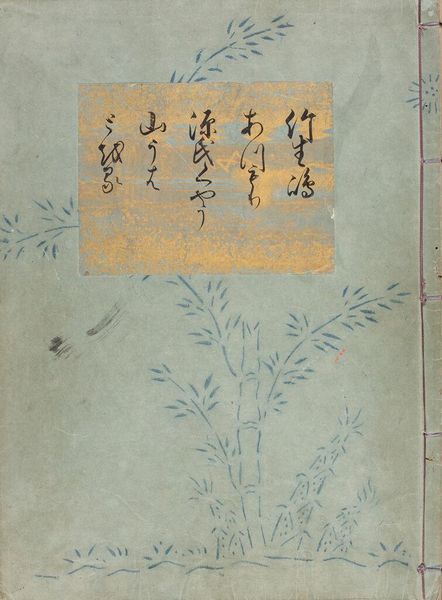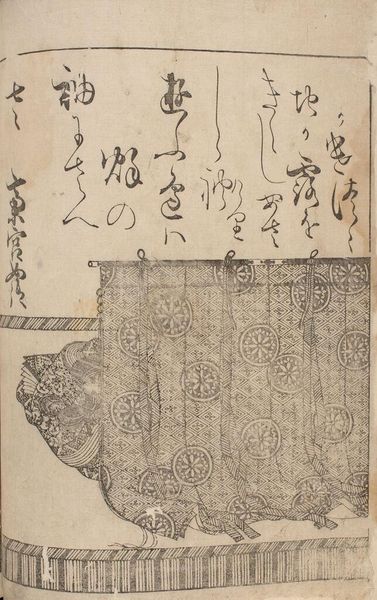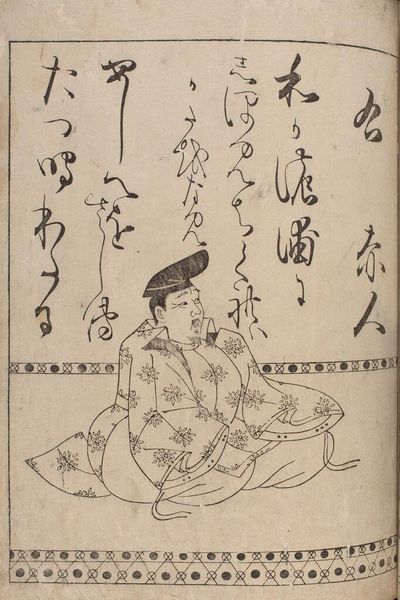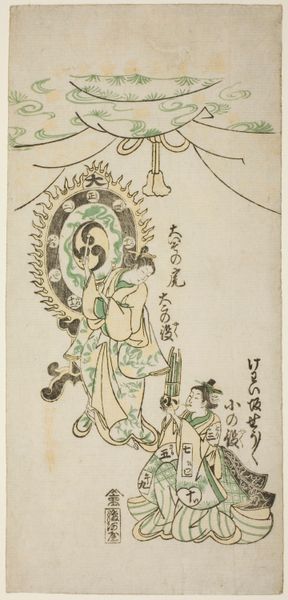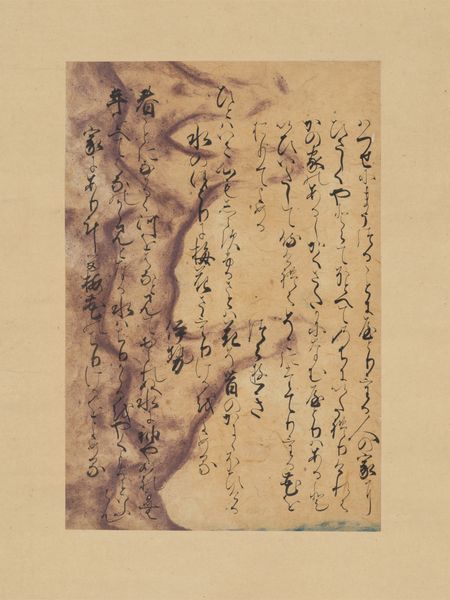![Courtesan Riding a Carp (parody of the Daoist Immortal Kinko [Chinese: Qin Gao]) by Suzuki Harunobu 鈴木春信](/_next/image?url=https%3A%2F%2Fd2w8kbdekdi1gv.cloudfront.net%2FeyJidWNrZXQiOiAiYXJ0ZXJhLWltYWdlcy1idWNrZXQiLCAia2V5IjogImFydHdvcmtzLzMxZTk3NzhjLWJiNWYtNDE5MC1iNjlhLTg0ODQxODJhMmU2Mi8zMWU5Nzc4Yy1iYjVmLTQxOTAtYjY5YS04NDg0MTgyYTJlNjJfZnVsbC5qcGciLCAiZWRpdHMiOiB7InJlc2l6ZSI6IHsid2lkdGgiOiAxOTIwLCAiaGVpZ2h0IjogMTkyMCwgImZpdCI6ICJpbnNpZGUifX19&w=1200&q=75)
Courtesan Riding a Carp (parody of the Daoist Immortal Kinko [Chinese: Qin Gao]) c. 1768 - 1769
0:00
0:00
#
narrative-art
#
ink painting
# print
#
asian-art
#
ukiyo-e
#
figuration
Dimensions: 27 1/4 × 4 3/4 in.
Copyright: Public Domain
Editor: This is Suzuki Harunobu's "Courtesan Riding a Carp," a print from around 1768-1769, now at the Art Institute of Chicago. The delicate lines and subtle colors give it a dreamlike quality. The composition is striking. How do you interpret this work through a formal lens? Curator: The artwork immediately commands attention through its masterful arrangement of lines and planes. Note how the verticality of the scroll mirrors the composition's overall upward movement. What effect does that parallelism create? Editor: It emphasizes the verticality, making it feel taller and perhaps more elegant. The curves of the carp and water balance it out, right? Curator: Precisely. Notice too the restricted palette; Harunobu strategically uses muted tones of ochre and black against the cream backdrop. How does the color enhance or detract from your experience? Editor: I see. The subdued colors allow the linework to take precedence. It keeps the scene balanced. So, line and color work together to create an interesting, sophisticated impression. Curator: Indeed. And the artist creates tonal subtleties despite using a medium that inherently favors graphic simplicity. The textural quality created using a woodblock technique invites us to consider not only how the picture functions representationally, but as an object with intrinsic value. The materiality and form are inseparable from content. Do you see this in other examples? Editor: That’s fascinating. Thinking about the relationship between form and content has definitely given me a new way to appreciate the artistry in ukiyo-e prints! Curator: And, in turn, our interpretation has taken another step forward. The visual is endlessly informative.
Comments
No comments
Be the first to comment and join the conversation on the ultimate creative platform.


